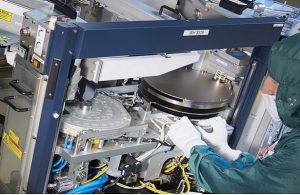4.4 Integration and implementation of hybrid model-data approaches to anomaly detection and control reconfiguration
 Anomalies can only be detected with confidence if the anomalous system behaves substantially different than expected. Moreover, for many types of anomalies, this difference is not perceived in normal operation until it is too late; i.e., the control performance has already degraded to the point that the system must stop for maintenance. This is why in many applications there are diagnostic routines, where, for a short moment, the system input is designed to make the system behave in a way that an anomaly is more evidently detected. For example, to detect if a process valve needs maintenance, some routines execute full opening and closing of these valves for a short period.
Anomalies can only be detected with confidence if the anomalous system behaves substantially different than expected. Moreover, for many types of anomalies, this difference is not perceived in normal operation until it is too late; i.e., the control performance has already degraded to the point that the system must stop for maintenance. This is why in many applications there are diagnostic routines, where, for a short moment, the system input is designed to make the system behave in a way that an anomaly is more evidently detected. For example, to detect if a process valve needs maintenance, some routines execute full opening and closing of these valves for a short period.
Project 4.4 investigates the problem of designing optimal input commands for anomaly detection and estimation. Different optimality criteria are sought. For example, if one wants to detect very small faults, which is often the case in high-tech systems, optimality refers to maximal fault estimation accuracy. In some cases, however, there is no time to stop production, so inputs must be designed to achieve the best trade-off between affecting control performance and revealing the anomaly.
The other work packages of Project 4 focus on passive hybrid model-data anomaly detection tools. Optimal input design enhances the performance of passive detectors, which enables their usage to fullest potential. This can enable the control reconfiguration / optimization approaches developed in Project 5 to be timely employed, minimizing defects and downtime. In term of use cases, an emphasis is given to the Tata Steel benchmark problem.








